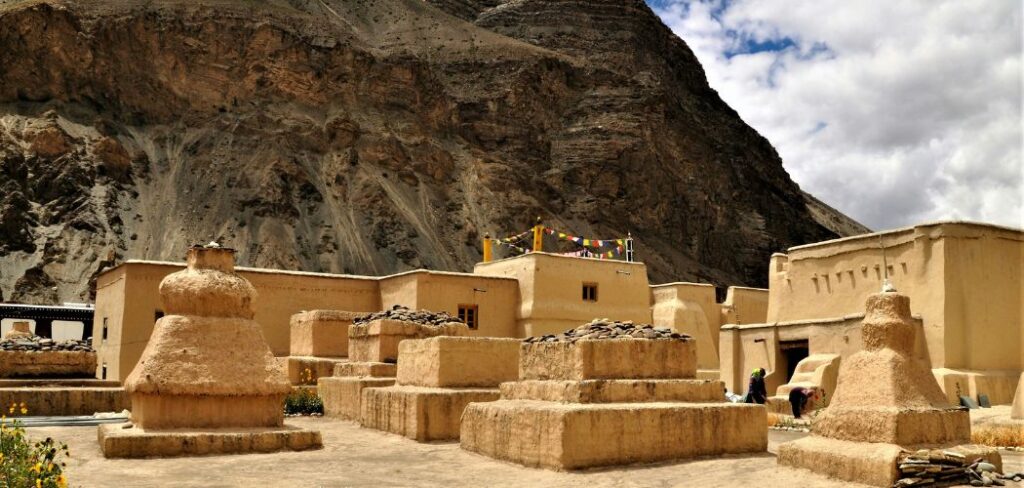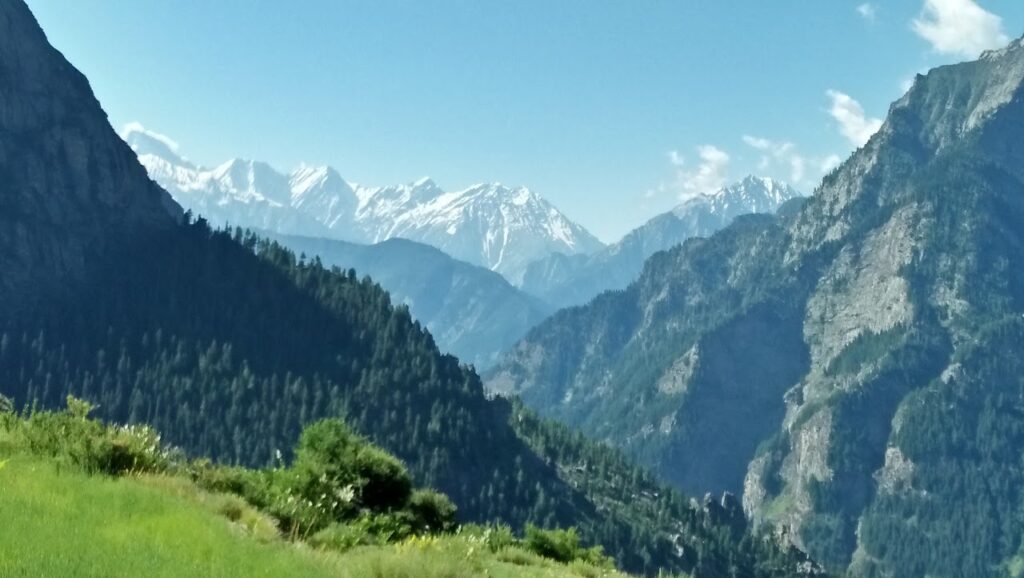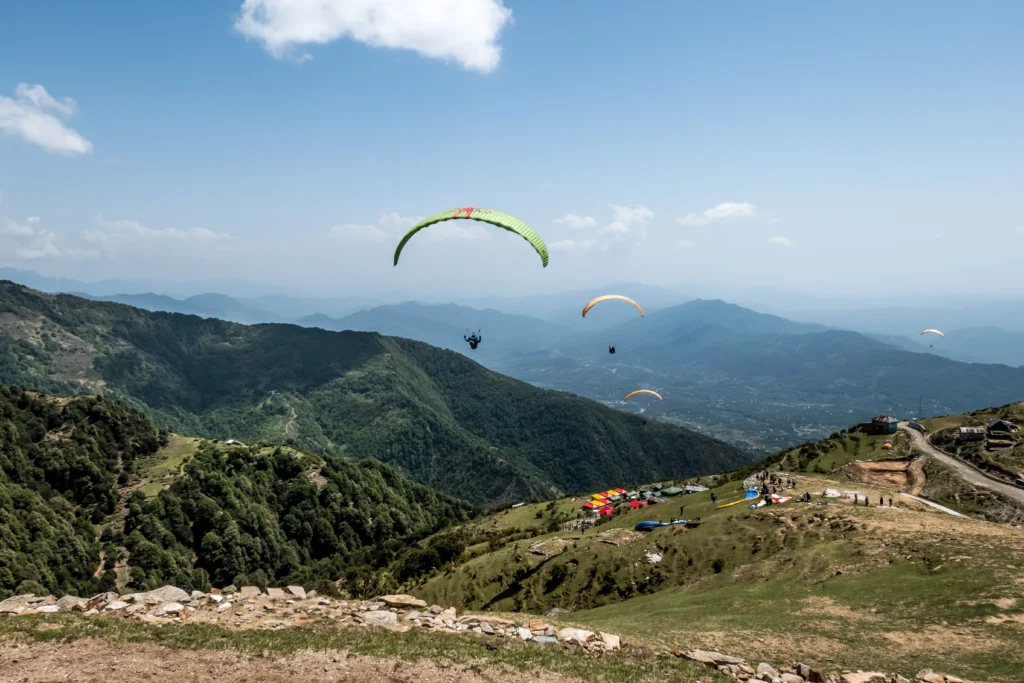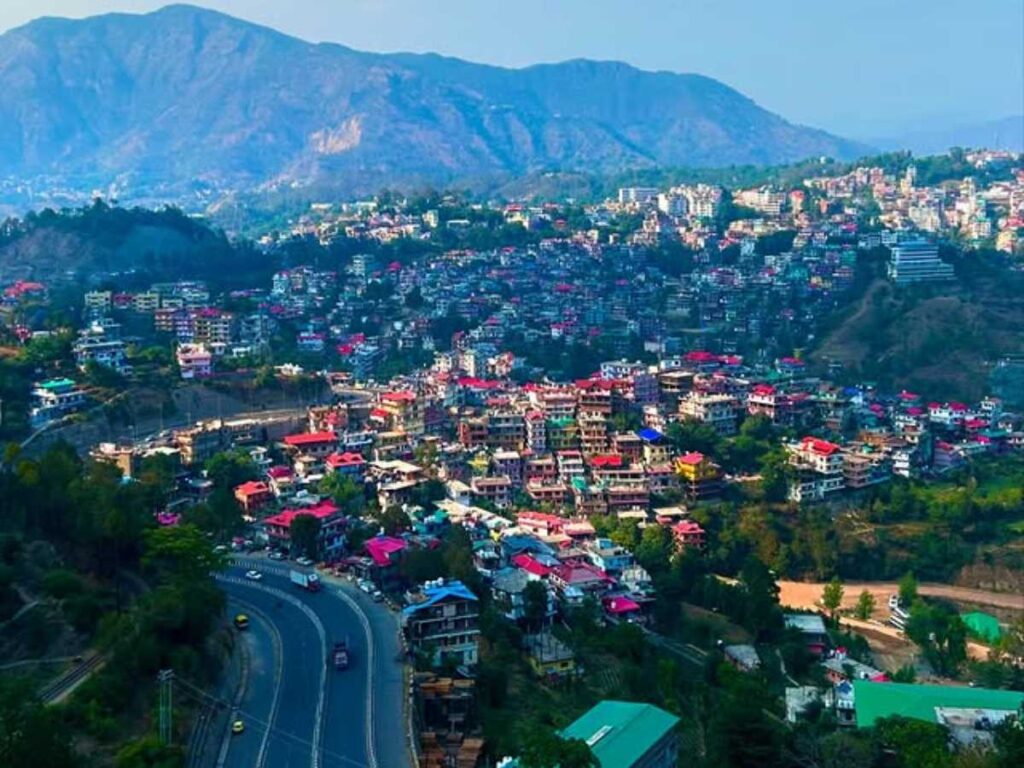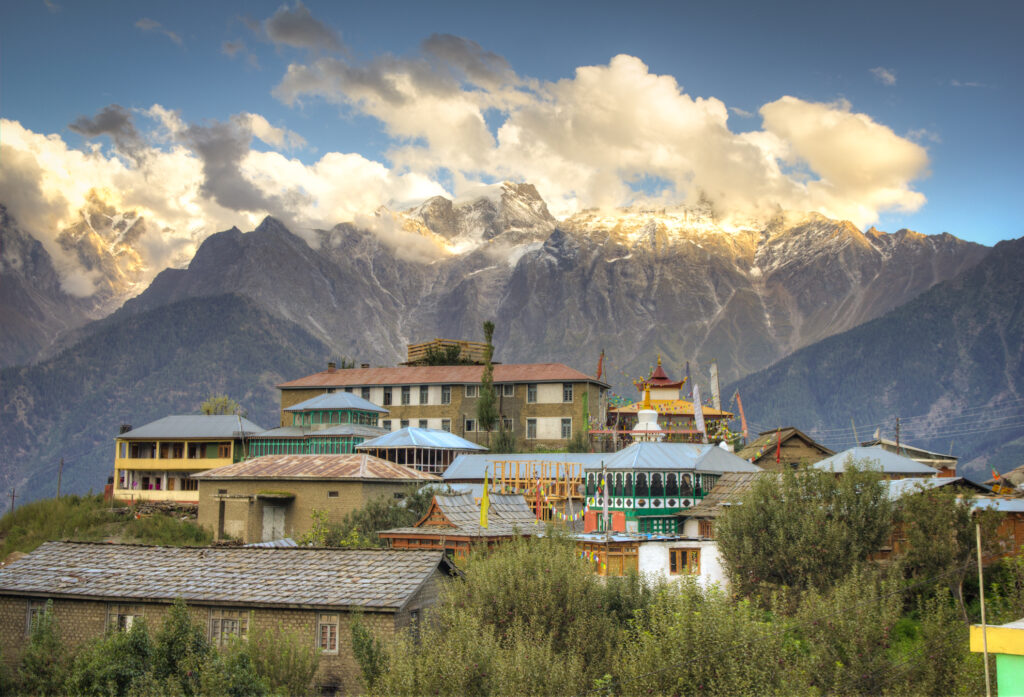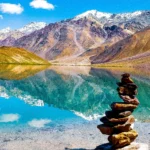Introduction
Imagine a monastery older than the Dalai Lama’s lineage, filled with dusty scrolls, divine murals, and ancient caves carved into the mountains. Welcome to Tabo Monastery, often dubbed the “Ajanta of the Himalayas” for its breathtaking wall paintings and historic significance.
Located in a cold desert at 10,000 ft, Tabo isn’t just a spiritual site — it’s a living museum, holding centuries of Tibetan Buddhist wisdom and Himalayan resilience.
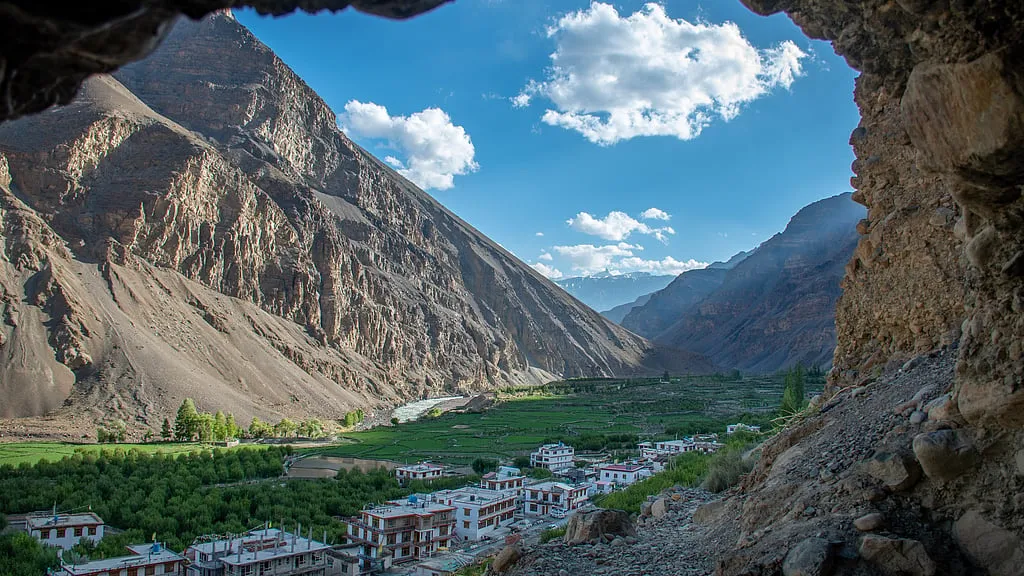
Location & Overview
- 📌 Tabo Village, Spiti Valley, Himachal Pradesh
- 🗺️ Altitude: ~10,760 ft (3,280 m)
- 🛣️ Distance from Kaza: ~50 km
- Founded in 996 AD by Rinchen Zangpo, a translator and Buddhist scholar
- Currently under the Dalai Lama’s Gelugpa sect
“I consider Tabo to be one of the holiest… it is the repository of the Tibetan Buddhist culture,”
— His Holiness the 14th Dalai Lama
Historical & Religious Significance
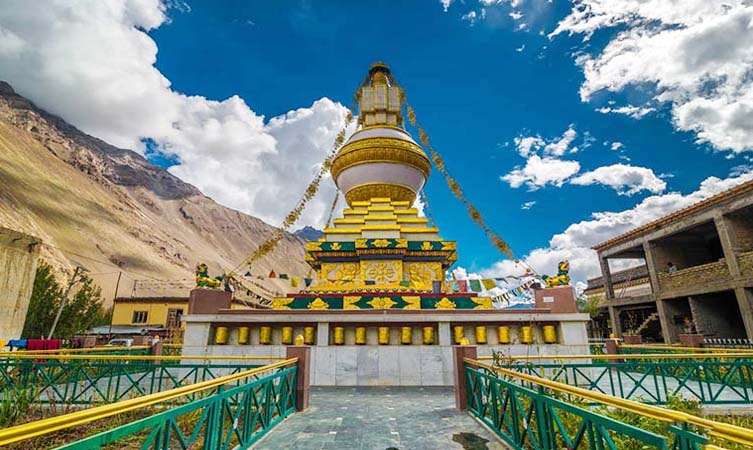
- Known as Chos-Khor Gompa (Doctrinal Enclave)
- One of the oldest continuously functioning Buddhist monasteries in the Himalayas
- Revered for preserving Tibetan scriptures, ancient thangkas, stucco sculptures, and murals
- Hosted the Dalai Lama’s Kalachakra Initiation in 1996 — marking its 1000-year anniversary
What to See at Tabo Monastery
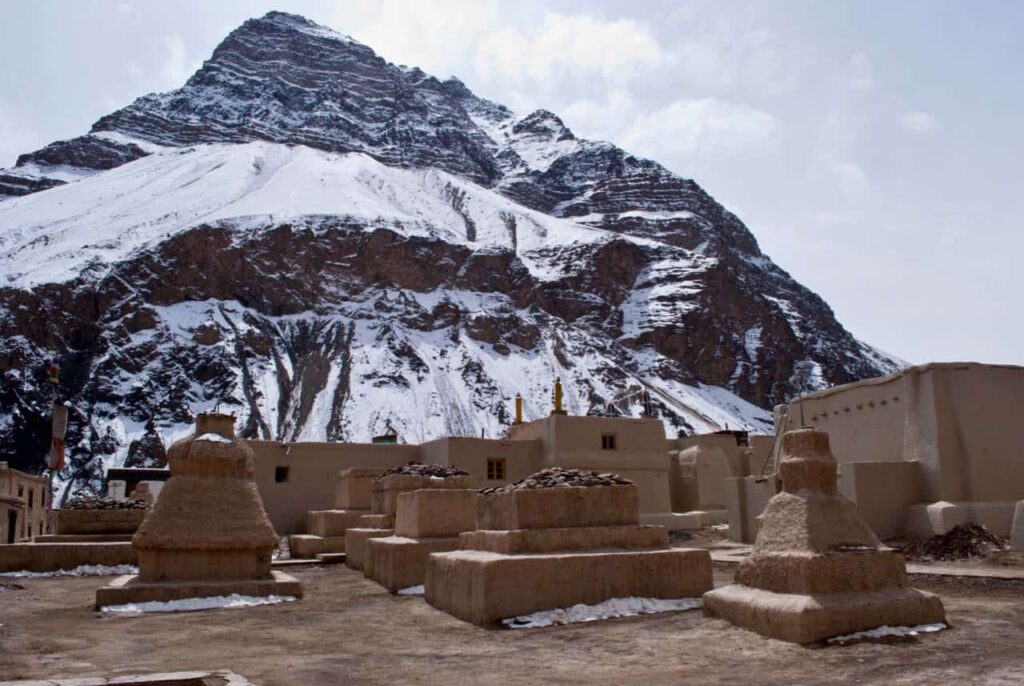
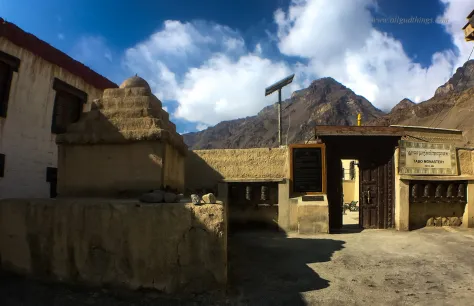
Old Monastery Complex
- 9 temples, 4 stupas, 23 chortens
- Temple of Enlightened Gods — features life-size clay sculptures and cosmic murals
- Assembly Hall (Dukhang) — dimly lit hall with over 30 guardian deities painted on the walls
- Tara Temple, Mandala Temple, and Golden Temple
Mud Walls & Caves
- Built entirely of mud and stone, preserving warmth and acoustics
- On the nearby cliff: ancient meditation caves used by monks for solitude and learning
- These caves offer a stunning view of the Tabo village and Spiti River
Ajanta of the Himalayas – The Murals
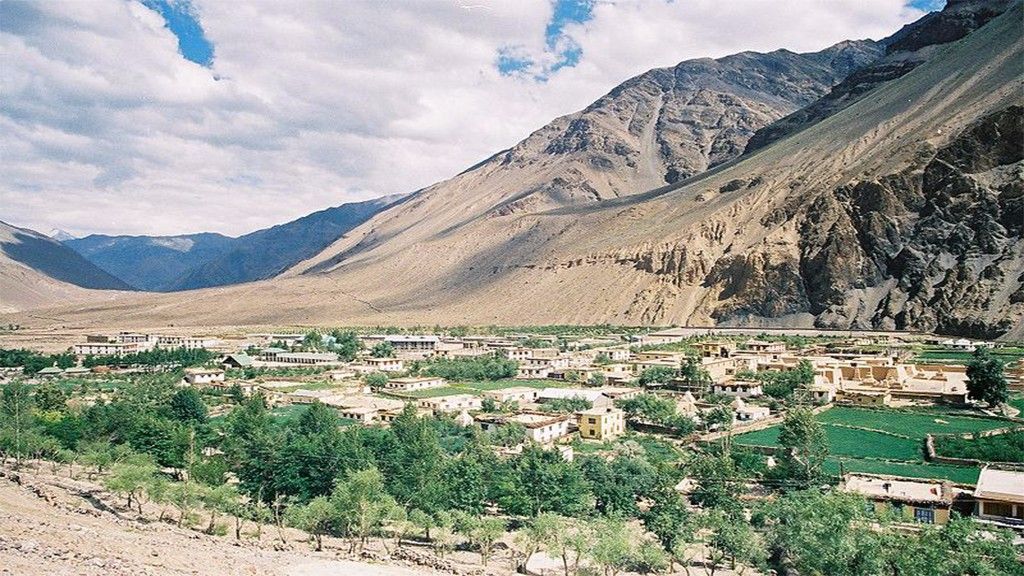
- The monastery’s murals are likened to those at Ajanta Caves in Maharashtra
- Intricate paintings depict Buddha’s life, Bodhisattvas, and spiritual symbols
- The walls speak — a visual journey through Tibetan Buddhist philosophy
Unlike Ajanta, Tabo’s murals remain active in religious use, not just artistic heritage
Staying at the Tabo Monastery
Yes, you can stay in the monastery guesthouse — a truly peaceful and enriching experience.
| Option | Features |
|---|---|
| Tabo Monastery Guesthouse | Basic rooms, clean bedding, attached bath, spiritual ambiance |
| Nearby Homestays | Local food, culture, and warm hosts |
✅ Participate in morning prayers, enjoy Tibetan bread with butter tea, and talk with monks
What to Eat
Tabo is a small village with few cafes, but some hidden gems:
- Monastery Kitchen – simple dal, rice, barley bread
- Tabo Café – momos, thukpa, herbal teas
- Norbu Kitchen – traditional dishes with apricot juice
🍑 Try the locally made apricot jam — Spiti’s natural treasure
Best Time to Visit Tabo Monastery
| Month | Experience |
|---|---|
| May–June | Warm days, active monastery life |
| July–August | Lush landscapes, occasional rain |
| Sept–Oct | Clear skies, golden fields |
| Nov–March | Open, but harsh winters and limited access |
How to Reach Tabo Monastery
- 🚙 By Road from Kaza (50 km, 1.5–2 hrs) or Reckong Peo (~150 km)
- 🛻 Part of the Shimla–Spiti circuit
- 🚌 Limited buses from Kaza and Sumdo
- 🏍️ Ideal for self-drive, bike riders, and slow travelers
Travel Tips
- Photography is not allowed inside main temples — respect the rule
- Acclimatize before visiting (10,000+ ft altitude)
- Dress modestly inside the complex
- Carry a headlamp — inner chambers are dimly lit
- Bring cash — limited/no ATMs in Tabo
Best Photography Spots
| Location | Shot Idea |
|---|---|
| Outside the Monastery | Sunset against mud walls |
| Cliff Meditation Caves | Framed view of Tabo village below |
| Entrance Chortens | Wide-angle Buddhist symbols |
| Spiti River bank | Monastery with river reflection |
Summary
Tabo Monastery isn’t flashy or Instagram-famous. It whispers, not shouts. It’s where the sands of time carry wisdom instead of dust. Visiting Tabo is like walking into the past — and leaving with a deeper sense of the present.
Planning a trip to Himachal Pradesh? Don’t miss our other posts on amazing places in the Lahaul-Spiti District.
Planning to Visit Tabo?
Pause. Reflect. Listen to the silence.
And when you return home, you’ll carry more than pictures — you’ll carry peace.
📿 Share your journey with #TaboTales!
Physics Made Easy: Disadvantages of Newton’s First Law (Day 5)
What Are…
Physics Made Easy: Newton’s First Law—Real-Life Examples (Day 2)
Exploring Inertia…
Top Places to Visit in Chamba: From Temples to Trekking Trails
Introduction Nestled…
Bir Billing – The Paragliding Capital of India
Introduction Imagine…
Solan City – Mushroom Capital & Industrial Hub of Himachal
Introduction Perched…
Kalpa – Land of Kinnaur Kailash and Mesmerizing Sunrises
Introduction If…

